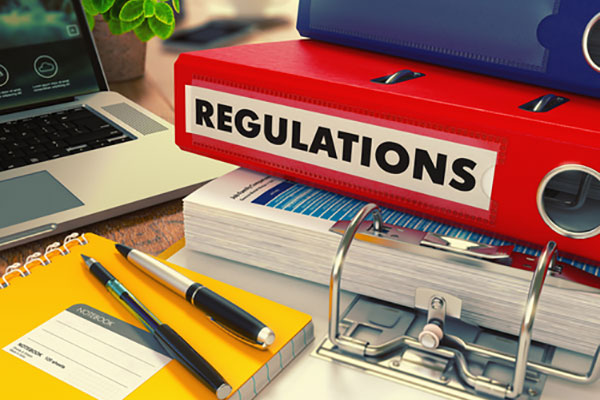On November 19, 2020, the California Occupational Safety and Health Standards Board (OSHSB) voted to adopt a comprehensive and complex COVID-19 emergency regulation addressing a variety of issues related to COVID-19 in the workplace. As previously reported, the OSHSB, the standards-setting agency within the California Division of Occupational Safety and Health (Cal/OSHA), had released the draft regulation text last week.
Throughout the pandemic, employers have been implementing infection prevention measures based on existing laws, executive orders, local directives and guidance from Cal/OSHA and public health departments. Now, under the new emergency regulation, employers must establish and implement a comprehensive written COVID-19 Prevention Program, which mirrors in many ways California’s Injury and Illness Prevention Program (IIPP) requirements and can be integrated with employers’ existing IIPPs. The following is only a brief summary of some key provisions. Employers should review the regulation and monitor Cal/OSHA’s website for guidance on the details.
The new regulation requires employers’ COVID-19 Prevention Program to be comprehensive and include:
- System for communicating;
- Identification and evaluation of COVID-19 hazards;
- Investigating and responding to COVID-19 cases in the workplace;
- Correction of COVID-19 hazards;
- Training and instruction;
- Physical distancing;
- Face coverings;
- Other engineering controls, administrative controls and personal protective equipment;
- Reporting, recordkeeping and access;
- Exclusion of COVID-19 cases; and
- Return-to-work criteria.
The new emergency standard contains notification requirements similar to those in AB 685, California’s new COVID-19 notice and reporting requirement law. Employers must give notice of potential exposure to COVID-19 within one business day to all employees who may have been exposed and their authorized representatives as well as independent contractors and other employers present during the exposure period. Employers should note that the differences in language, definitions and terminology between AB 685 and the new Cal/OSHA standard raise uncertainty about when the notice requirements are triggered and to whom notice should be given under which rule. Employers should consult with legal counsel to clarify their obligations and ensure compliance with both rules.
Other notable provisions include specific infection control and safety requirements for employer-provided housing and transportation as well as “outbreak” provisions that are triggered when three or more COVID-19 cases occur in the workplace within a two-week period. Among other things, when an outbreak occurs, employers must provide notice to their local public health department within 48 hours and provide COVID-19 testing to exposed employees.
Lastly, employers should take note of the regulation’s exclusion provisions. The regulation requires employers to exclude employees with COVID-19 and those who were exposed to COVID-19 from the workplace until they satisfy certain return-to-work criteria. But, for exposed employees who may not have COVID-19, employers must continue and maintain the employee’s earnings, seniority and benefits while they are off work. This is essentially a new paid time off requirement. It doesn’t apply if the employee is unable to work for reasons other than preventing COVID-19 transmission or the employer can demonstrate that the COVID-19 exposure was not work related. Other than those exceptions, the requirement has no limiting language, meaning, for example, an employee who is excluded from the worksite multiple times must be paid each time.
Cal/OSHA is submitting the new COVID-19 prevention standard to the Office of Administrative Law (OAL) for immediate review. As an emergency regulation, the OAL has ten days to review and approve the regulation, meaning this new standard could go into effect as early as November 29, 2020. It will last 180 days and may be renewed beyond that time. Cal/OSHA is expected to issue compliance guidance on the new rules and will likely move forward with permanent rulemaking next year.
Employers should begin reviewing these new requirements immediately. Some of the emergency provisions reflect standards and practices already adopted under previous guidance and mandates, but many are new as well. Employers should consult with legal counsel on developing their written COVID-19 Prevention Program as well as developing or amending their policies to account for the new requirements.
Staff Contact: James W. Ward

